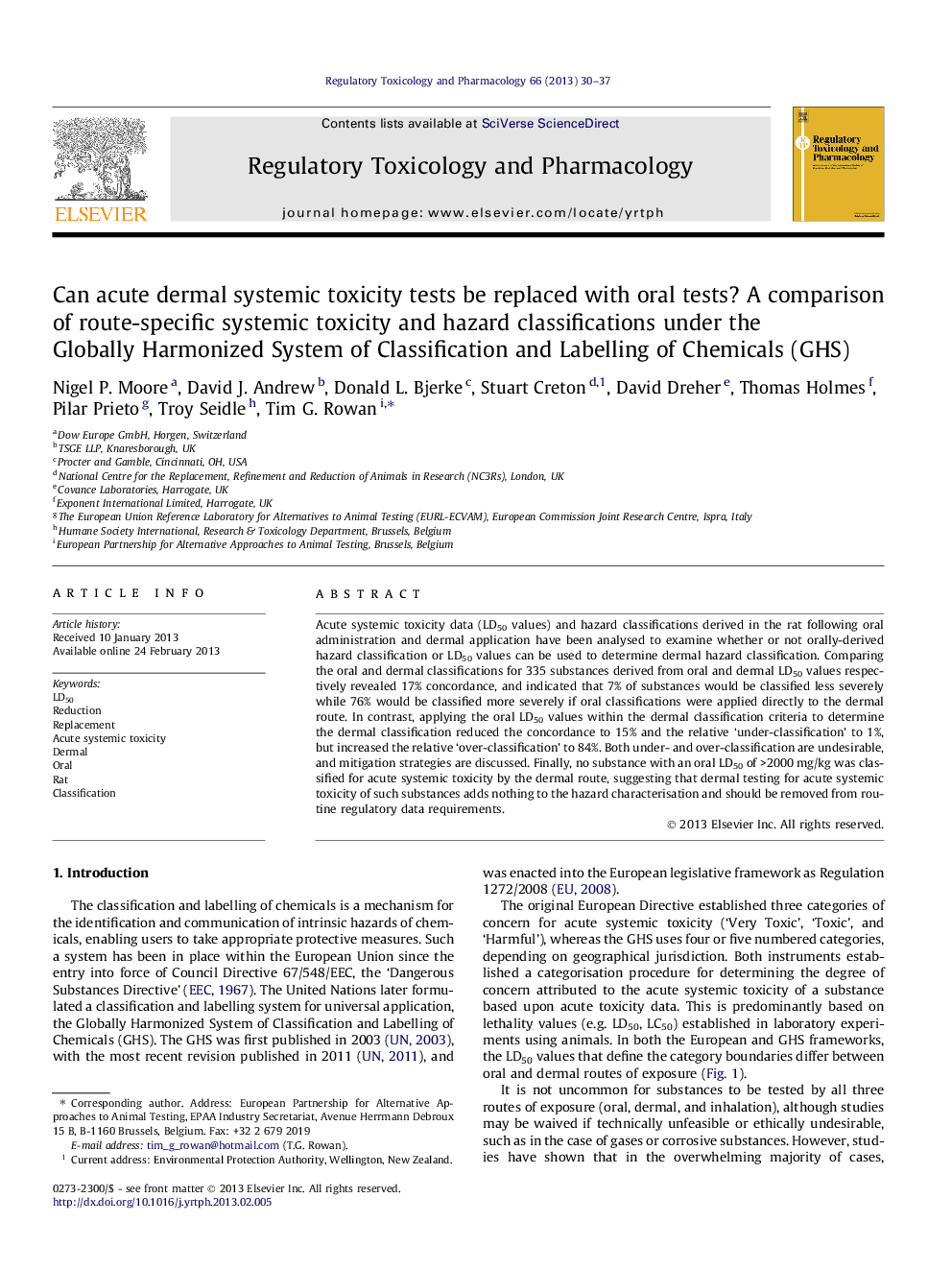| Article ID | Journal | Published Year | Pages | File Type |
|---|---|---|---|---|
| 5856961 | Regulatory Toxicology and Pharmacology | 2013 | 8 Pages |
Acute systemic toxicity data (LD50 values) and hazard classifications derived in the rat following oral administration and dermal application have been analysed to examine whether or not orally-derived hazard classification or LD50 values can be used to determine dermal hazard classification. Comparing the oral and dermal classifications for 335 substances derived from oral and dermal LD50 values respectively revealed 17% concordance, and indicated that 7% of substances would be classified less severely while 76% would be classified more severely if oral classifications were applied directly to the dermal route. In contrast, applying the oral LD50 values within the dermal classification criteria to determine the dermal classification reduced the concordance to 15% and the relative 'under-classification' to 1%, but increased the relative 'over-classification' to 84%. Both under- and over-classification are undesirable, and mitigation strategies are discussed. Finally, no substance with an oral LD50 of >2000Â mg/kg was classified for acute systemic toxicity by the dermal route, suggesting that dermal testing for acute systemic toxicity of such substances adds nothing to the hazard characterisation and should be removed from routine regulatory data requirements.
⺠Oral and dermal acute toxicity has been evaluated for the replacement of dermal tests. ⺠Weak concordance between the routes reflected the imprecision of classification. ⺠No substance with an oral LD50 >2000mg/kg was properly classified by the dermal route. ⺠Dermal testing of substances unclassified by the oral route should be dissuaded.
